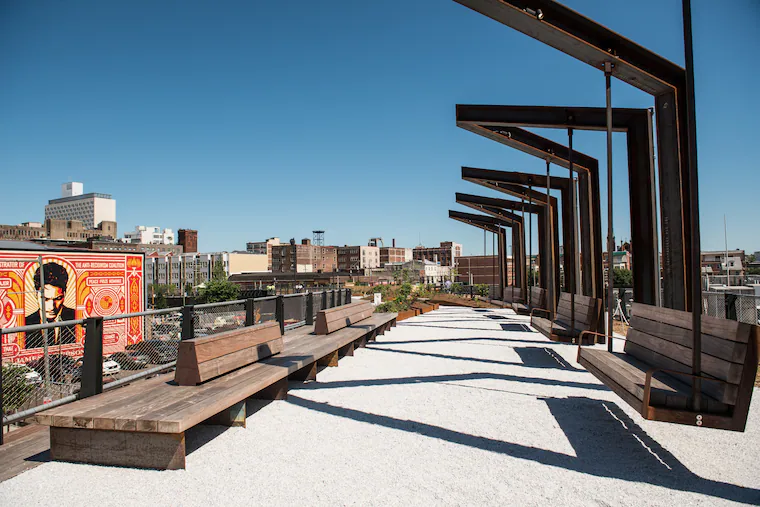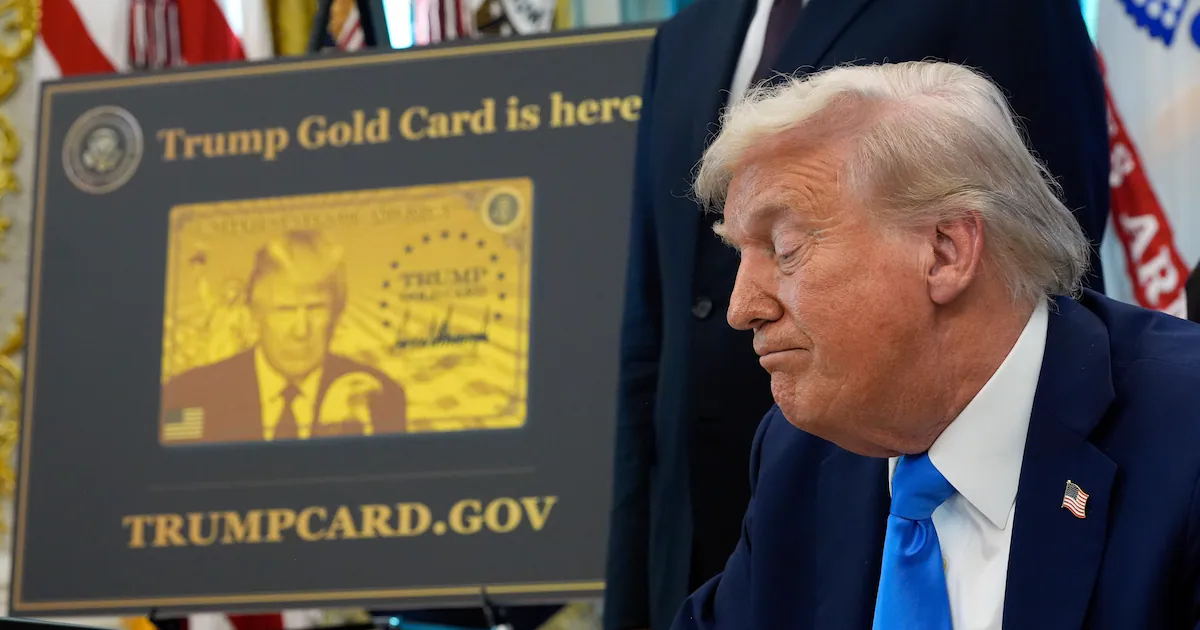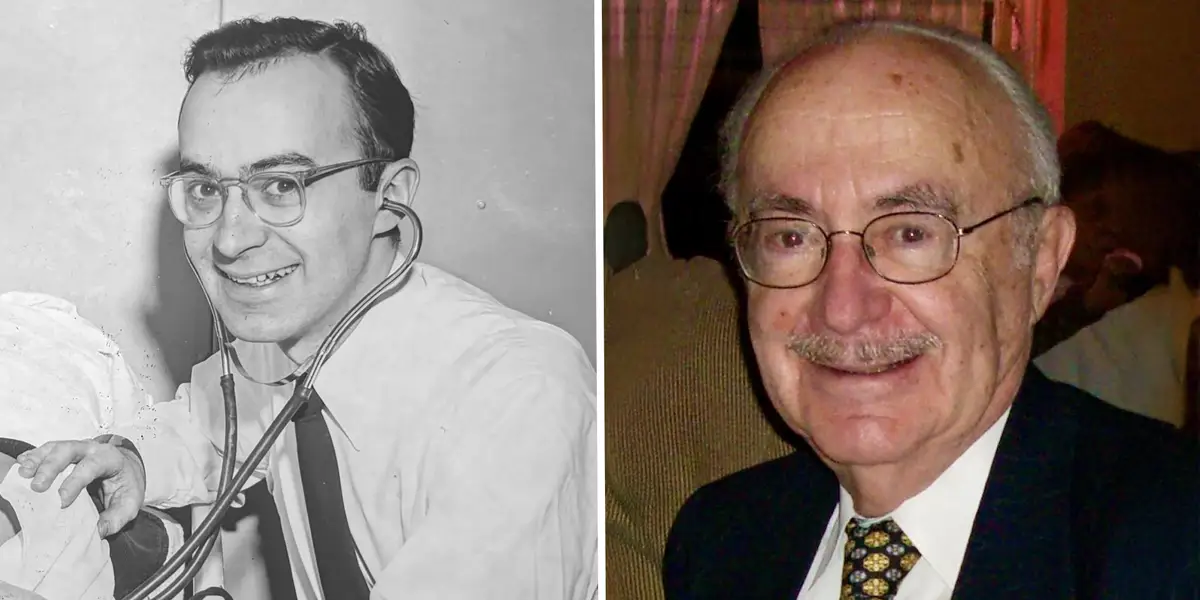
Is the old Reading Railroad Viaduct in Philly still a railroad?
A new federal ruling has cleared the way for Philadelphia to acquire land in the Callowhill neighborhood to expand the popular elevated Rail Park built on the old Reading Railroad Viaduct, officials say.
Legislation introduced Thursday by Councilmember Mark Squilla authorizes the city to accept a donation of viaduct land, buy it, or condemn it between Vine Street, Fairmount Avenue, 8th Street and 12th Street, for the park.
Although the city has tried to acquire the land through donation since 2018, this is the first time the city could have the power to condemn the land and move forward with long-standing plans to expand the park’s footprint.
The first phase of the Rail Park opened in 2018 on the former home of the Reading Railroad elevated viaduct, and was inspired by New York’s High Line. The one-quarter mile green space transformed what had been an overgrown stretch of abandoned railway.
The new stretch would amount to less than a mile.
If the city gains control of the land, the Center City District (CCD), a business improvement district, would take the lead in raising money for the effort that would include remediation of the contaminated viaduct and other improvements for a park.
Paul Levy, chair of the CCD, said he hopes the city can still avoid condemnation by negotiating a deal with the land’s owner, Reading International, a real estate and entertainment company that owns a string of movie theaters in the U.S., Australia, and New Zealand.
However, a ruling Wednesday by the federal Surface Transportation Board on whether the viaduct could still be considered a railroad has cleared a path, officials say.
“It’s a huge step forward,” Levy said.
Is the viaduct still a railroad?
The Reading Railroad was absorbed by the government-created Consolidated Rail Corporation (Conrail) in 1976. As a result, the Reading Railroad ceased to operate, but the corporation that owned the rail properties remained, eventually becoming Reading International.
Reading International owns about 201-acres, mostly in Pennsylvania, from its legacy railroad business, according to a company corporate filing. That includes the Reading Viaduct, which encompasses 6 acres in Philadelphia. The company also still owns the trade name Reading Railroad, featured in the Monopoly board game.
Levy said a major road block to acquiring the land has been whether Reading International can still be considered a railroad company, and if viaduct land is part of a railroad operation.
The issue is key because railroads are exempt from condemnation or taxation.
Last year, the city petitioned the Surface Transportation Board, a federal agency charged with economic regulation of freight rail, for a ruling.
On Wednesday, the board ruled that the viaduct had been abandoned and that it no longer fell under its jurisdiction as being part of a rail operation.
Levy said that if it’s no longer a railroad and not under federal jurisdiction, then the property is governed by state and local laws and no longer exempt from local real estate taxes. That clears the way for the city to move to condemn the land if it can’t reach an agreement with Reading International.
A representative from Reading International could not be reached immediately for comment.
Ambitious plans for the Rail Park
The viaduct is steeped in Philadelphia’s history as an industrial powerhouse and it took years to turn it into a park.
Originally built by the Reading Railroad in the 1890s, the viaduct was part of the line’s Ninth Street Branch, a 1.6-mile span. It was used until 1984 when trail service stopped. Once abandoned, the viaduct became a source of urban blight.
Two Callowhill residents, Sarah McEneaney and John Struble, began efforts to turn it into a park in the early 2000s. They founded the nonprofit Friends of the Rail Park in 2004. Plans to turn the viaduct into a park faced various challenges, including property acquisition and disagreements among neighboring communities about the park’s impact and design.
Clearing those hurdles, officials broke ground in 2016 and the park opened two years later in a segment stretching from Broad and Noble Streets to 10th and Callowhill Streets. The quarter-mile stretch cost roughly $12 million, and was funded by the city, state, and private donations with assistance from the CCD and William Penn Foundation.
Officials have more ambitious goals for the park, envisioning a three-mile, Y-shaped area that would stretch across historic rail lines and connect 10 neighborhoods from Northern Liberties to Brewerytown. They hope for an extended greenway filled with paths and plants with open spaces.
The proposed second phase of the expansion will convert a 6.8 acres of brownfields at the viaduct, from Vine Street to Fairmount Avenue, into an elevated park.
‘Not a magic moment’
Levy framed the potential expansion as a win-win scenario where the city gets the land for the park, and Reading is relieved of a costly, contaminated liability while simultaneously increasing the value of its other real estate holdings.
For years, the city has proposed that Reading International would donate the viaduct to the city and in exchange, CCD would raise the funds to renovate the deteriorating piece of the viaduct and transform it into a park.
The funds would address the viaduct’s extensive environmental contamination, which includes remediating toxic chemicals and lead paint. This cleanup is a significant undertaking, with an estimated cost of $50 to $60 million, compared to $105 million to demolish the structure.
That would turn a blighted asset into a park, and the project would create value for adjacent parcels that Reading International still owns. The parcels are considered good development sites, and the contaminated viaduct currently leaches onto them, making them difficult to develop.
Reading has rebuffed donation in the past, so this week’s ruling opens the door for the city to take control of the land without Reading’s approval.
Levy said the federal ruling and new legislation, “is not a magic moment,” noting it could cost about $70 to $75 million to complete the addition to the park when the remediation is included.
But he said obtaining the land is imperative, noting there have been two fires on the viaduct properties within the last several weeks.
“There is abuse of the site,” Levy said. “And that has an adverse effect on all the surrounding communities. So clearly, the win-win situation here is that we get it turned into a wonderful park and it becomes an asset for the surrounding neighborhoods.”
Rebecca Cordes Chan, executive director of Friends of The Rail Park, said the nonprofit organization learned of the council legislation on Thursday and has not had a chance to discuss it.
“In the sense that the viaduct section in that portion is part of the Rail Park’s three mile vision, it’s a win,” she said.



